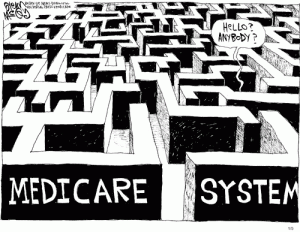By Jack Cumming
Not long ago, Steve Moran, publisher of Senior Living Foresight, presented the industry with two questions:
- Are we health care or a lifestyle product?
- When capital invests in senior living, are they investing in real estate or a business op?
These are crucial questions, and they deserve answers, especially from the perspective of customers (residents) and prospective customers. Senior living is an occupancy-driven business. Sales and marketing matter, and the more appealing the product offering, the easier the sales process becomes.
Some of the changes common in the industry reduce corporate risk by increasing customer risk. That changes the value proposition of the senior living product. As that becomes known, sales become more difficult. Some of those changes shift the emphasis to health care more than lifestyle. Recently, it has seemed like the lifestyle prize of happy living is being conceded to the active adult 55+ market.
Unbundling
Charging piecemeal for care is common now. It wasn’t always so. At one time, the continuing care model caught on with the public with the promise that, if you moved in early while still hale and hearty, you would get care when needed at only a nominal extra charge for added meals. That gave people a welcome peace of mind.
The question is, “Are we health care or a lifestyle product?” The industry is both, though the trend is toward health care. There’s a low-hassle lifestyle with meals, camaraderie, an activities director, wellness advice, fitness, and more included. There’s also access to separate health care services for those who need them. The lifestyle product appealed to younger residents, who sought to move in while they could still meet the screening requirements for the “life-care” care-inclusive product.
It’s different, though, with the pay-for-care product. No need to be able to walk unaided up a flight of stairs, or to have your wits still fully intact, to gain admittance. Thus, there’s no urgency about moving in early. Pay-for-care allows people to move in who need care from the start. Residents needing care are interspersed among those who don’t, with the more vibrant residents enriching the lives of the frail and failing. That changes the experience, and the word-of-mouth, for those who are attracted to the lifestyle.
Surprisingly, most of those who moved in 20 or more years ago, and who have aged in residence, tend to have retained their vitality. There is an increase in those already well into decline among the newer move-ins, and that’s not just in one community. It’s now common. You can draw your own conclusions about how that impacts marketing.
A Less Attractive Product Bundle
Including lifetime care in the bundle that includes lifestyle amenities like food, activities, and the like creates an incentive for a community to keep residents healthy. That’s an attractive proposition: carefree living in an environment committed to a resident’s good health and well-being.
Having pay-as-you-go fees for care, or allocating people needing care to tiers, opens care services as a profit center. The incentives reverse, and it becomes profitable to trend the community toward assisted living. Why would a customer trust a model that profits if the customer fails? It’s no wonder that people stay put at home.
Earlier, the industry predominantly offered better living with worry-free aging and financial assurance. Now the trend is toward health care for those who are failing. Moreover, the industry’s messaging is so murky that even those communities who do include health care in the bundle are hurt by the overall industry buzz.
Capital Matters
As senior living increasingly moves toward a health care operating model, in pursuit of greater profit, the residents’ experience deteriorates both financially and communally. That brings us to Steve Moran’s second question: “When capital invests in senior living, are they investing in real estate or a business op?”
That’s the money question. Many operators, both nonprofits and privately held for-profits, look to real estate appreciation to support underpriced or undercapitalized operations. Accounting doesn’t do well at tracking this kind of business expectation. Since inflation is part of our nation’s economic policy, and since population keeps growing while land area is fixed, real estate values do appreciate over time.
With almost no exceptions, residents don’t share in that appreciation. Entrance fee investments don’t appreciate; they don’t pay interest; and they are subordinate to corporate debt. Residents lose financial security when they invest in entrance fees. Take away the financial assurance of future included health care, which once was the justification for entrance fees, and the product becomes something that prospective residents should rightly be wary of.
Product First
It’s time to return to putting product first, even before money. Money follows product, but a preoccupation with money can denigrate product value and drive customers away, leading to a trend toward ruin. Accountants often declare that “cash is king” and continue to justify balance sheets with liabilities exceeding assets. In truth, customers reign, and a business is only sustainable if it offers a product that benefits customers.
While home- and community-based services, continuing care at home, and active adult 55+ are alternatives that are growing in popularity, they do not offer the same propco, opco, capital squeeze opportunities to which conventional CCRCs are subject.
Sometimes we forget that today’s senior living, and CCRCs in particular, began for the most part as mutual-benefit cohousing ventures. It was only after the collapse of the clergy-run Pacific Homes that the business-dominated model emerged with profit-minded advisors encouraging leveraged growth as their business purpose. The story of the community where I live is an example of that move from mutuality toward top-down control. Click here for the founding story of that community. Click here for an in-depth review of the industry.








